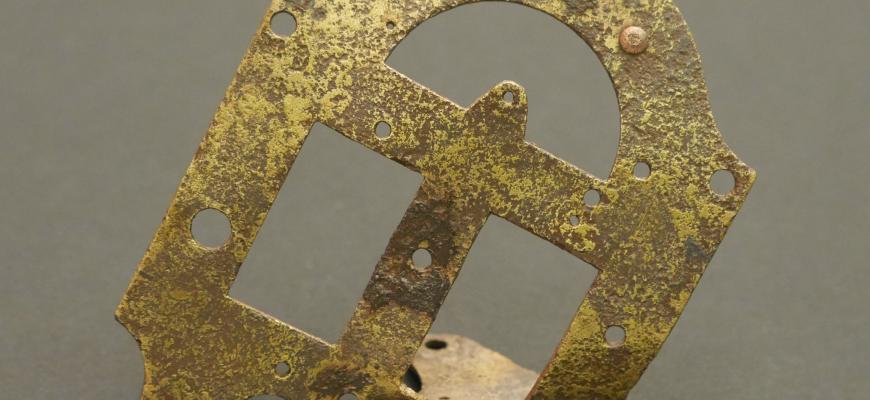Archaeological excavations undertaken prior to the construction of a parking garage in 2000 and 2001 resulted in the recovery of over 10,000 artifacts dating from the mid-seventeenth through the nineteenth centuries. These excavations took place outside the original stockade associated with the seventeenth-century Dutch settlement at Albany called Beverwyck (1652-1664). Significant individual components of the collection include artifacts from a brick maker’s house and yard dating to the second half of the seventeenth century, a mid-eighteenth century rum distillery, and several nineteenth century features and deposits.
Quackenbush Parking Garage
- Historical Archaeology
Sub Component
Brick Makers House and Brick Yard
This collection contains artifacts from a house which may have been the residence of a brick maker.The archaeological remains consisted of a wooden floor constructed directly on the ground and the base of a brick fireplace and chimney. Red earthenware tiles were used for the roof and the house had glass windows, delft tiles, and iron hardware. Ranging in date from the 1640s to c. 1700, nearly 5,000 artifacts are associated with the house site including European ceramics, glassware, tobacco smoking pipes, glass trade beads, and shell beads called wampum. An associated seventeenth century brickyard deposit containing less than 500 artifacts is also included in the collection.
- Stratum VI: Pre-contact to 1630, 319 artifacts.
- Stratum V: 1631-1651, 1643 artifacts.
- Stratum IV: 1652-1653, 42 artifacts.
- Stratum III: 1654, 280 artifacts.
- Stratum II: 1655-1686, 1370 artifacts
- Stratum I: Post 1686, 920 artifacts.
- Brickyard: 17th century, 418 artifacts.
An Eighteenth Century Rum Distillery
A large rum distillery or “Still-House,” was excavated during the winter of 2000-2001 before the construction of the Quackenbush Parking Garage in downtown Albany. The Still-House was constructed during the French and Indian War and renovated in the 1790s. Remains of 21 large wooden vats, a system of wooden pipes that connected groups of the vats, and the stone bases of two stills and the chimney were located within the building, the foundation of which measured 60 by 36 feet. The largest vats were eight feet in diameter and could hold nearly 1900 gallons of fermented rum. Artifacts recovered from the distillery include two large wooden vats and a wooden pipe that connected the vats. Smaller items include rum bottles, a spigot, and tobacco pipe fragments. A privy from the renovated distillery was excavated as well.
- Deposits: 18th century, 1071 artifacts.
- Wooden vats, pipes, and other features associated with the distillery: 18th century, 815 artifacts.
- Privy: ca.1800, 275 artifacts.
Nineteenth Century Deposits and Features
This collection contains artifacts from features and soil deposits dating to the nineteenth century. The most significant of these are 4 privies and a cistern that were filled with a variety of nineteenth century objects.
- Deposits: 19th century, 186 artifacts
- Brick Cistern: 19th century, 1 artifact.
- Stone Foundation: 19th century, 12 artifacts.
- Privy: 19th century, 2 artifacts.
- Privy: 19th century, 35 artifacts.
- Privy: 19th century, 15 artifacts.
- Privy: 19th century, 395 artifacts.




